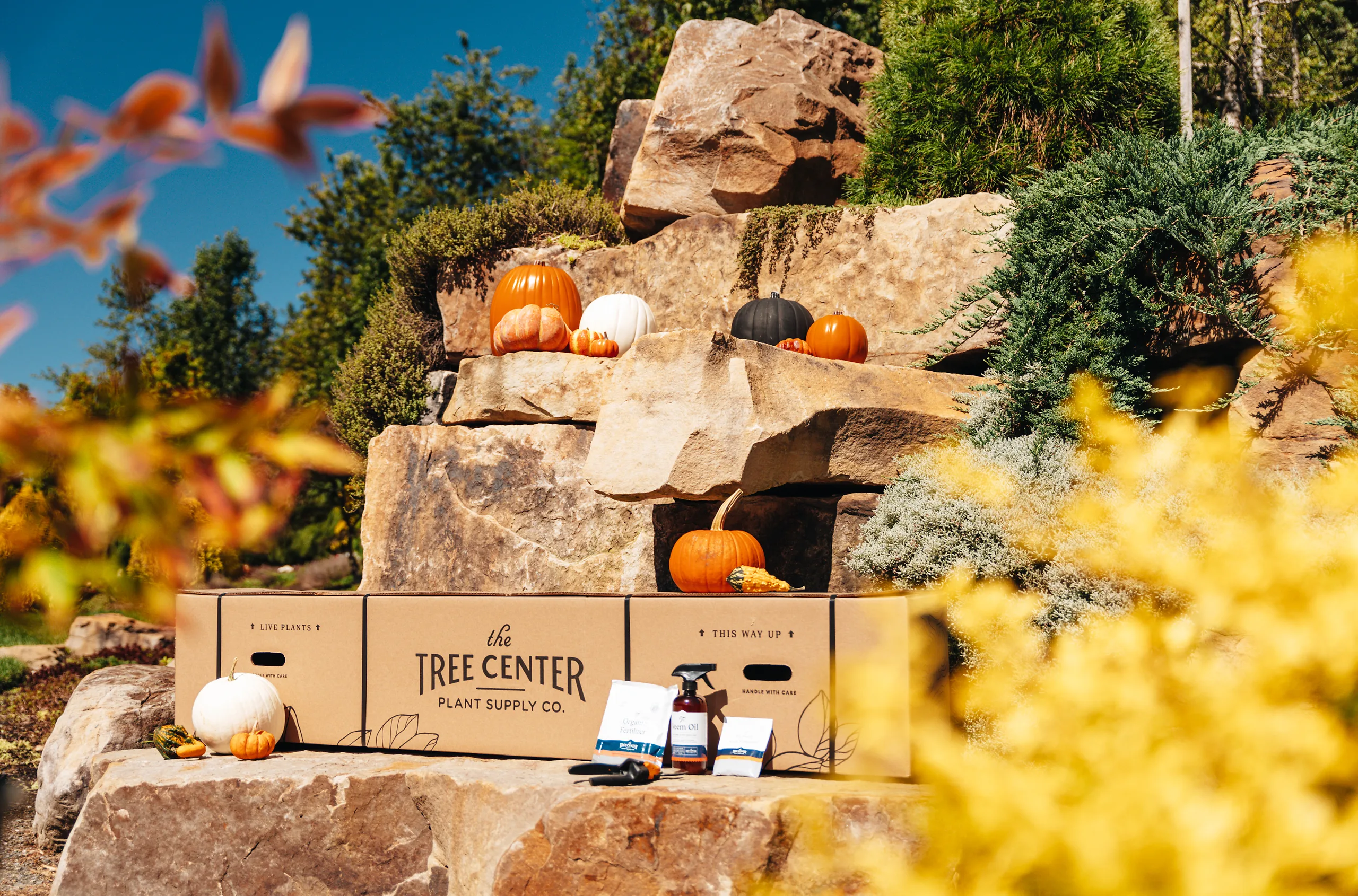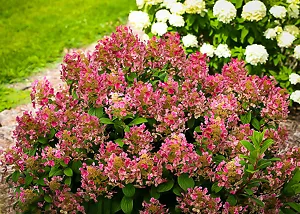
Written by s • Time to Plan for Fall Color
Summer is at its height, but the smart gardener is always thinking ahead. Fall will be with us all too soon, and if you want to continue the garden fun and beauty into that special season, it’s time to take inventory and add some plants that will make it an even better season for you. We always think of fall leaves when thinking about the beauty of that season, but there are flowering plants too that are still blooming, or only beginning to bloom at that time too. Let’s look at some of plants for foliage and flower interest in fall – if you don’t already have them, now is the time to find a place for them – the best gardens are interesting all year round.
Fall Blooming Plants
Hydrangea
The classic plant for late summer and fall has always been the hydrangea. Those big flower heads in pink or blue last and last, from late summer well into the weeks of fall, and even as they fade and change into greens and browns they add interest and variety to the fall garden. Well known in colder parts, and deserving more attention in warmer states too, are the panicle types of hydrangeas, which have been through a Renaissance in recent years, with new varieties showing stronger fall coloring. These hydrangeas, with their characteristic conical flower heads, instead of rounded, are usually a cooling white in summer, but as the temperatures drop they begin to color – first with tints of pink, and then becoming red.
The older forms of this plant (Hydrangea paniculata) grew tall, but newer forms are much more compact and suitable for smaller gardens. Some, like Little Quick Fire, as small enough to grow in containers, adding fall color to your terrace or patio. As its name suggests, Little Quick Fire is also very early blooming, so in a pot you get a full extra month of blooms. Plants like the Bobo Hydrangea stay under 5 feet tall, as does Pinky Winky, which is unique in happing flower clusters that keep their white tip, creating a two-tone effect. If you like a softer look, check out Little Lamb, with a profusion of smaller blossoms in the flower head, creating a unique softer effect. For a larger garden, look out for full-sized forms like Fire and Ice, or Ruby Slippers. You may need to wait until next spring for them to be available, but when you see those vibrant colors next fall, you will know the wait was worth it.
Azalea
What’s that, azaleas only flower in spring? That is true no longer, with the Encore Azaleas. These plants were specially bred, using a rare re-blooming species, so that they would bloom not just in spring, but again in fall, raising azaleas into the elite ranks of re-blooming plants like roses. You instantly double to weeks of bloom by growing these varieties, rather than older, traditional types. Encore Azaleas belong among the small-leaved, evergreen azaleas that do best in zones 7 and 8, although some of them have proved themselves reliable in zone 6 too. This means that in milder parts of the country it makes sense to choose your azaleas from among the wide range of Encore Azaleas available. Perhaps the pure white of Autumn Angel will fit your garden décor, with a cool, sophisticated look. Or perhaps the deep red of Autumn Embers will be perfect below the glowing leaves of a red maple. Choose colors that compliment the fall display in your garden – and add a whole new dimension to that display with these easy shrubs.
Other Fall Blooming Plants
Once you start looking the range of fall bloomers is much more than you might suspect. For a hot, sunny spot, the different Butterfly Bushes (Buddleja) continue to bloom right up to the arrival of cold weather. With new varieties like that don’t produce seed anymore, you don’t need to worry about seedlings spreading into natural areas around you – these varieties produce no seed. Look for the names ‘Summer Lilac’ and ‘Nectar Bush’, which designate non-invasive varieties of Buddleja. Specific varieties that have ‘Miss’ in the name are similar to the traditional older forms, but safe, and those that have ‘Chip’ in the name are smaller types that are ideal for smaller gardens and container growing.
For a very different blooming look in fall, plant underneath your trees and shrubs with the Royal Purple Liriope. This grass-like plant makes a fabulous ground cover, and in fall it becomes a sea of purple-blue spikes of flowers. They look spectacular in contrast with fall leaves – the red and purple is a stunning combination.
Shrubs and Trees for Fall Color
It is more traditional to think of fall as a time of colored leaves, and certainly the backbone of your fall display should be in the trees, especially if you live in colder areas, where fall color is best. It takes a combination of warm days and cold nights to develop the strongest fall colors, so not all trees will color well if you live in a warmer area. Japanese maples need less cold to give good color, and by choosing wisely among the hundreds of varieties you can have anything from glowing gold (seen in the Coral Bark Japanese Maple) to rich, vibrant red (in varieties such as Purple Ghost, which turns crimson in fall, after deep red leaves all summer). For a multi-colored display it is hard to beat the variety called ‘Seiryu’, whose delicate, red-edged green leaves turn into a kaleidoscope of crimson, orange and gold at the first touch of lower temperatures.
In colder areas the native maples and oaks stand supreme, but these are too large for modern smaller gardens. Instead look for shrubs with good fall color. High on the list are the different Barberry Bushes (Berberis). These color vibrant reds and gold in fall, and they turn a corner of your garden into a glowing show. Most gardeners know the older varieties with red leaves, but today there are varieties like Orange Rocket, with orange foliage all summer, which turns ruby red in fall. Or look out for Rose Glow, which starts the year with purple foliage, highlights it with rose-pink new growth all summer, and then turns spectacular shades of purple and red in fall. The never-ending color display of Barberry Bushes makes them ‘must-haves’ in smaller gardens especially, where every inch has to count in generating the maximum color through all the seasons.
We have just scratched the surface of the many trees and shrubs that bring fall color, but even with these, you can bring lots of interest to that season, and keep the gardening year going much longer than the traditional spring and summer display.






